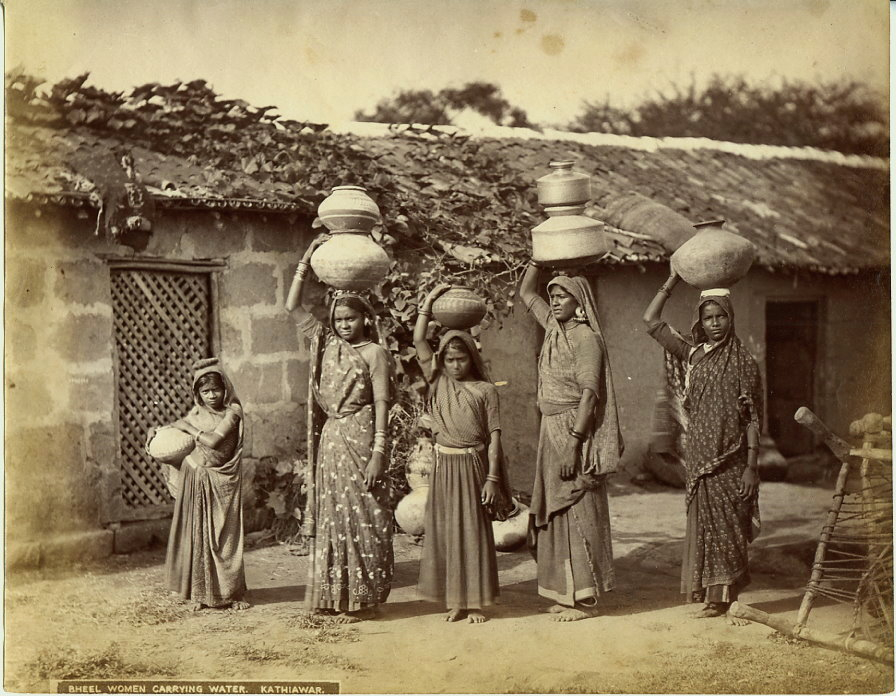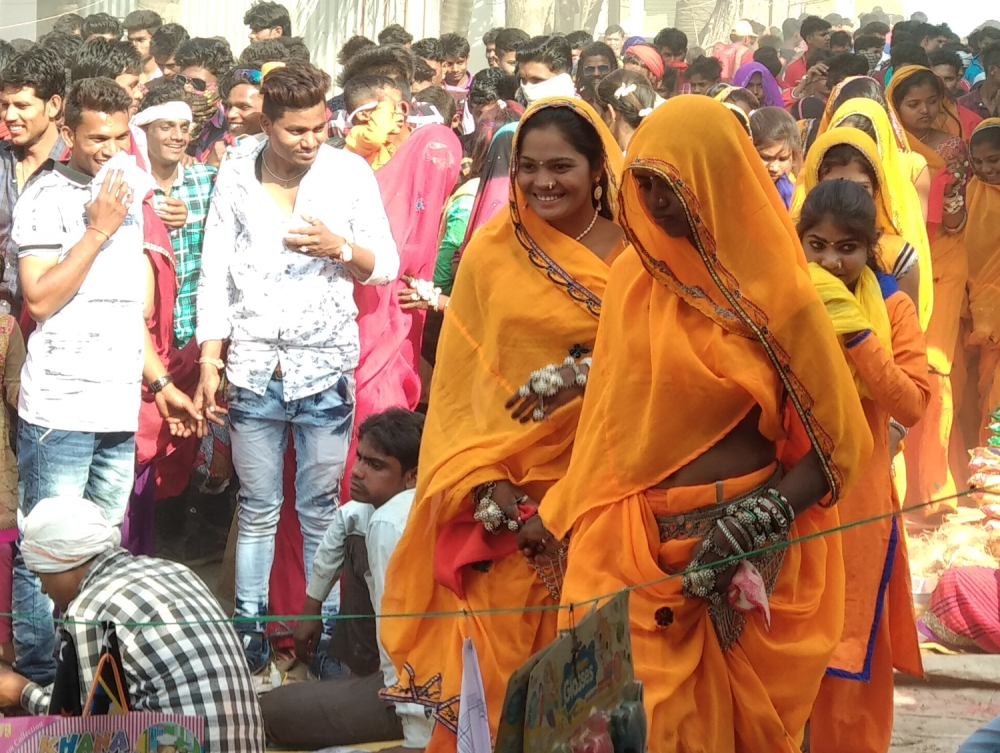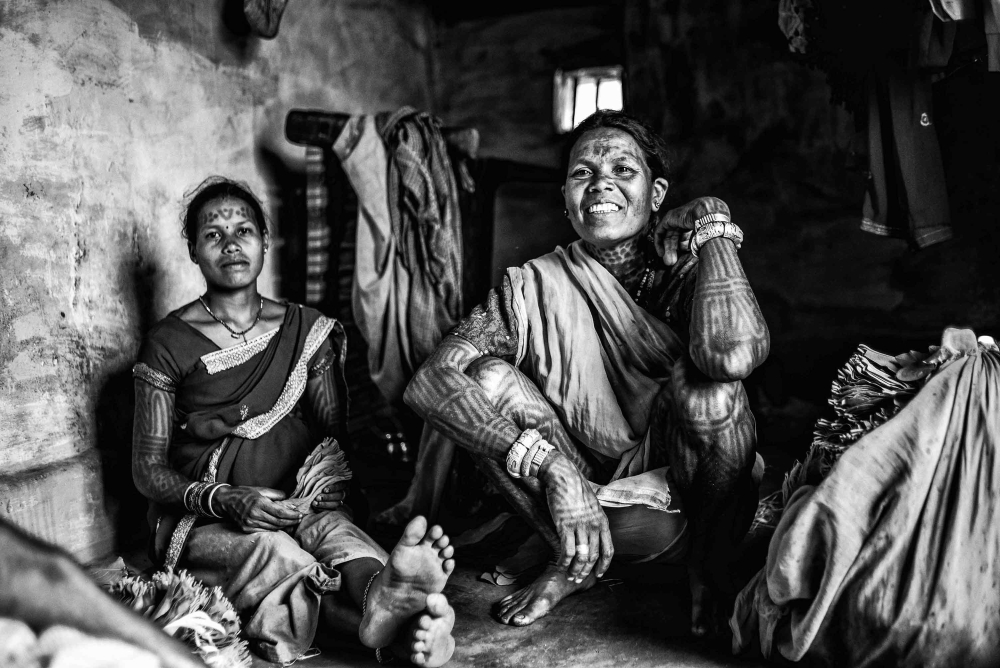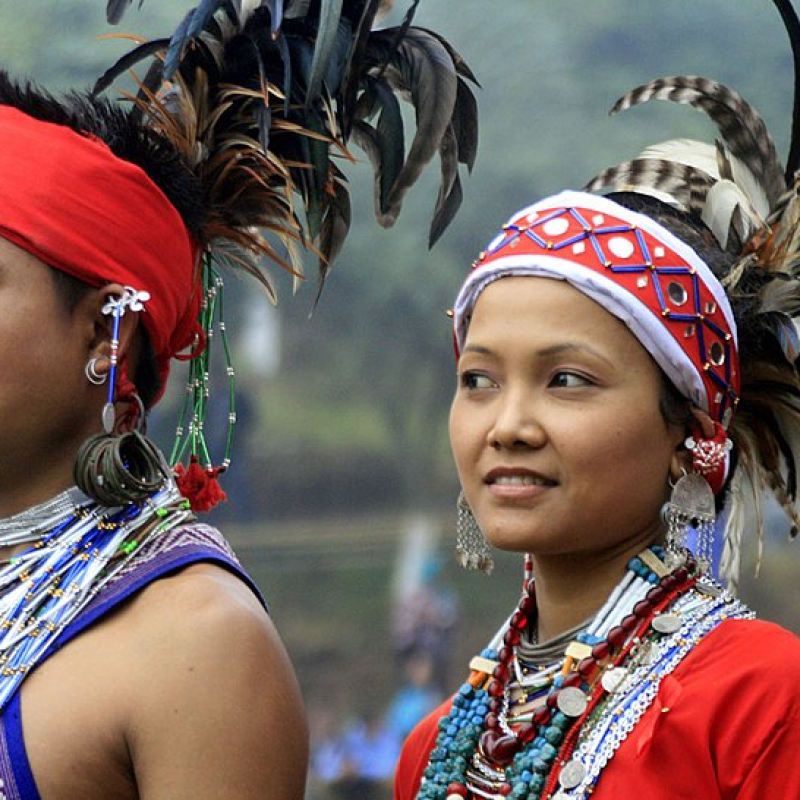With a multiplicity of customs and rituals attached to its celebration, ‘weddings’ sometimes take peculiar and interesting forms in the mosaic of cultures constituting India. We look at courtship and marriage customs in some Indian tribes. (In Pic: A couple from the Garo tribe; Photo Courtesy: Vishma thapa/Wikimedia Commons)
Capture, elopement, refusal and service are not words one would usually associate with a marriage, let alone a happy one, but a cursory look at some of India’s tribal practices might make you think otherwise. Sexual relations and relations of love receive the sanction of the community through a bond of marriage—different kinds of festivities and rituals are attached to this celebration—which is brought about several factors ranging from historical developments, economy, geographical location, etc.
Here we attempt to throw the spotlight on some marriage practices among India’s tribal communities, while trying to understand the rationale for these customs. For instance, as eminent lawyer Bhagwat Bhandari writes in Tribal Marriages and Sex Relation, ‘even polyandry in Kinnars, Lahaulis, Spitians, Todas, etc., has an economic reason—less land being available for their agriculture they have reason to keep down the population and the number of families.’[1]

With a multiplicity of customs and rituals attached to its celebration, ‘weddings’ sometimes take peculiar and interesting forms in the mosaic of cultures constituting India. A significant aspect of tribal weddings and culture, in general, is the social status they allow the Adivasi women. An example of this is the custom of bride-price (where the husband pays his wife’s parents in kind or cash on marriage). This is contrary to the widely known and discouraged practice of dowry (where the bride’s parents pay the groom’s family in kind or cash on marriage). One can even see multiple examples of the ghar-jamai (house-husband) or lamsena system among the Bhils and Baigas. In the first case, the boy lives in the girl’s house after marriage where the customs prescribe that the girl inherits the family property. In the second, if the boy’s family is unable to pay the bride price, he lives and works in the girl’s family until the amount is paid off.[2]
Related | Jat Haryanvi Marriage Rituals and Songs
Polyandry (marriage of a woman to two or more men at the same time) is fairly common among several tribes, such as the Gallongs of Arunachal Pradesh, and the reason could be socioeconomic. Due to high bride-price, sometimes, brothers of a family cannot afford to marry different women.[3] The Bhils, on the other hand, are known to practise polygyny (marriage in which two or more women share a husband). Historically, this elevated women’s status and helped in cultivating larger tracts of land owing to a larger family size.[4] However, these practices are in decline today due to the rising influence of education, modernity and a desire to assimilate into mainstream cultures, such as that of Hinduism, Islam, Christianity, etc.

Courting multiple partners can be seen in tribes such as the Murias/Madias of central India, where boys carve combs to declare their love and desire. The woman can wear as many combs in her hair as a matter of social pride. It is only after spending time with several partners in a ghotul (traditional youth community centre) does a couple decide to get into matrimony and start a family. Another version of this live-in relationship is practised among the Garasias of Rajasthan, where this tradition is called dapa.[5] Shahid Pathan, a journalist who has studied the indigenous practices of the area, says, ‘These tribals, whose livelihood depends on farming and working as labour, marry their live-in partners only when they have sufficient money. . . Needless to say, that happens much later in their lives, and in absence of money they continue living together for several years and even become parents without the fear of bearing a child out of wedlock.’[6] Interestingly, Bhandari also talks about the acceptance of past lovers as gotia (ex-boyfriend) and gotan (ex-girlfriend) in the Korta tehsil of Rajasthan among couples, as long as the associations are not flaunted.[7]
Also read | Gasshi Festival of the Char Chapori Muslims of Assam
We move from accepted living-in to ritualistic abduction—of the groom! Among the Garos of eastern India, once a girl chooses who she’d like to marry, the boy is abducted and confined to a separate home with his bride-to-be. The custom dictates that the groom should feign unwillingness to get married and run away twice, only to be recaptured. However, fleeing a third time is supposed to indicate actual unwillingness resulting in a meeting of the village elders and potential discarding of this proposal. ‘It is interesting to note that, this custom once became a subject for litigation in a court at Tura (Meghalaya). A man filed a suit for compensation against the father of a girl who had captured him for marriage. According to the petitioner, he was captured by the girl's party and according to the custom he refused and ran away. After that none came to recapture him and the girl married someone else,’ quotes scholar Kusum Kumar from A. Playfair’s 1909 book, The Garos.

After abduction, elopement can’t be far behind, and there are rules for this as well. The Bhils and Gonds of central India hold an annual fair around the Holi festival called Bhagoriya Haat (elopement fair), during which girls can run away with boys of their choice. The father of the bride, thereafter, negotiates the bride-price and gives his blessing to the couple; this is followed by a community feast.[8] However, both parties have the choice to refuse at any time, and that is respected by all.
Social scientist Rajiv Gupta calls it ‘the right to choose and right to reject. . . In tribal society, democracy is deep-rooted, whereas the institution of marriage gives superiority to manhood. . . Tribal people are more into practices that give equality to both sides—what democracy actually preaches to us.’[9]

These tribal customs might seem strange to those used to societies governed by marriage laws as defined in the Hyde v Hyde case[10] of 1866: ‘voluntary union for life of one man and one woman to the exclusion of all others’. Some are even illegal according to the Shastric and Quranic laws that were used to form the Indian Penal Code in the nineteenth century, or may not be in accordance with the customs of the ethnicities listed in the Indian Constitution. But they are very much a part of India’s cultural fabric and should be acknowledged as such.
Also see | Baiga Adivasis of Central India
However, modernism and a desire to be included in mainstream society has led to such traditional customs slowly disappearing, as both family structures and economic conditions are changing. Despite such dilution in their traditional way of life, tribal customs reflect diversity in an era of cultural homogenisation—where cultures are consumed commonly, on a global scale, via media, internet, and popular culture.
This article was also published on Scroll.in.
Notes
[1] Bhagwat Bhandari, Tribal Marriages and Sex Relations: Customary Laws of Marriage in Bhil and Garasia Tribes (1989).
[2] Kusum Kumar, 'Marriages in Tribal India'. Journal of the Indian Law Institute 15, no. 4 (1973): 638-44. Accessed February 10, 2020. www.jstor.org/stable/43950236.
[3] Ibid.
[4] Bhagwat Bhandari, Tribal Marriages and Sex Relations: Customary Laws of Marriage in Bhil and Garasia Tribes (1989).
[5] Akhtar, Shahnawaz, 'Marriage an alien notion for Indian tribe', Aljazeera, June 2014. Accessed February 8, 2020, https://www.aljazeera.com/indepth/features/2014/06/marriage-an-alien-notion-indian-tribe-2014617134343167160.html.
[6] Ibid.
[7] Bhagwat Bhandari, Tribal Marriages and Sex Relation (Udaipur: Himanshu Publications).
[8] Kusum Kumar, 'Marriages in Tribal India', Journal of the Indian Law Institute 15, no. 4 (1973): 638–44. Accessed February 10, 2020.www.jstor.org/stable/43950236.
[9] Shahnawaz Akhtar, 'Marriage an alien notion for Indian tribe', Aljazeera, June 2014. Accessed February 8, 2020, https://www.aljazeera.com/indepth/features/2014/06/marriage-an-alien-notion-indian-tribe-2014617134343167160.html.
[10] A landmark case of the English Court of Probate and Divorce. The case was heard 20 March 1866 before Lord Penzance, and established the common law definition of marriage.













